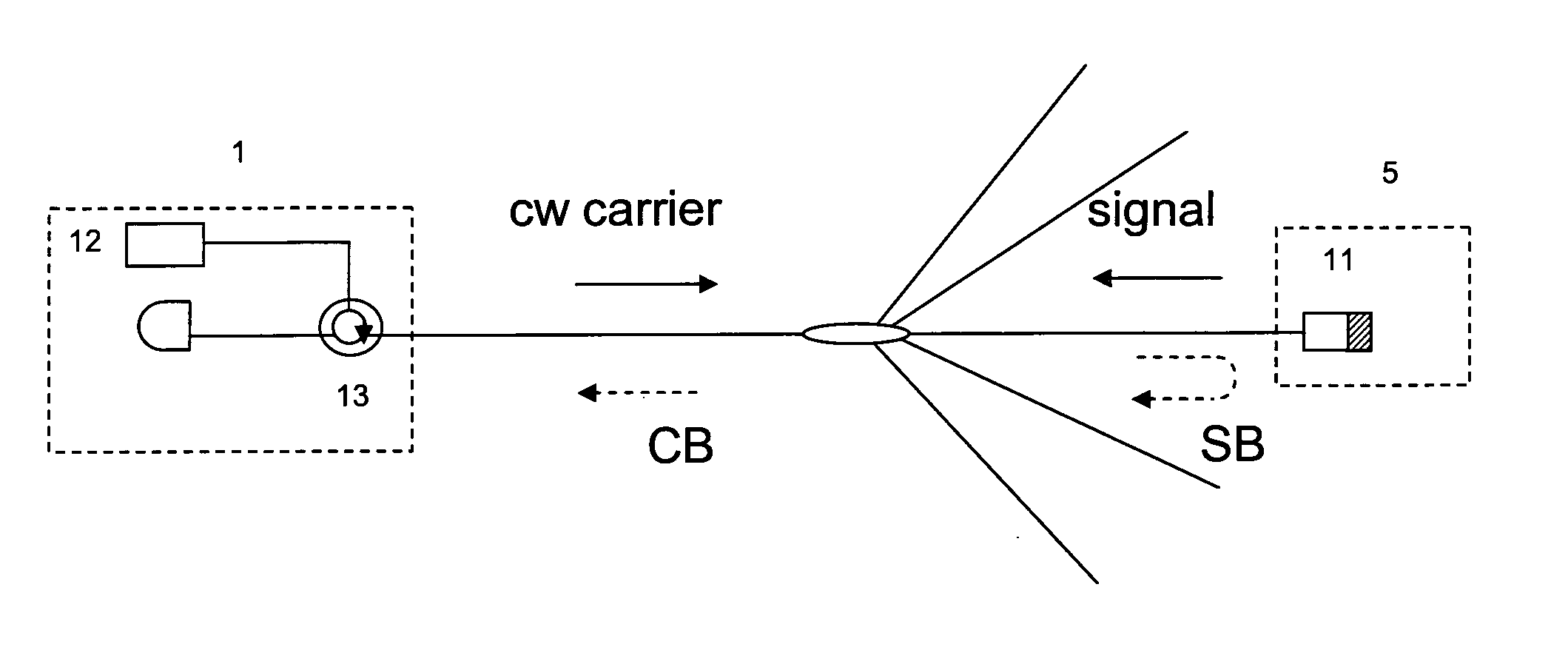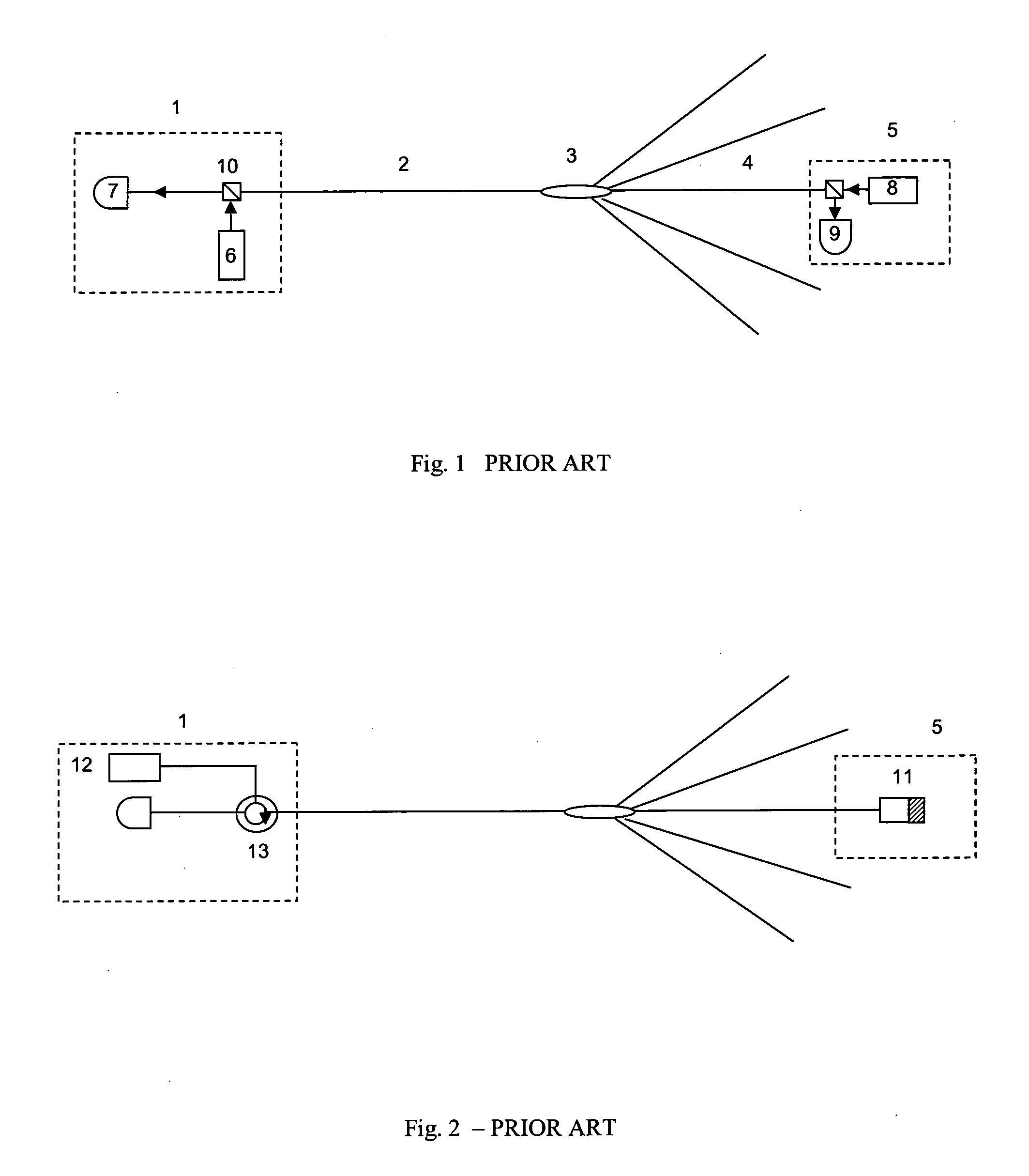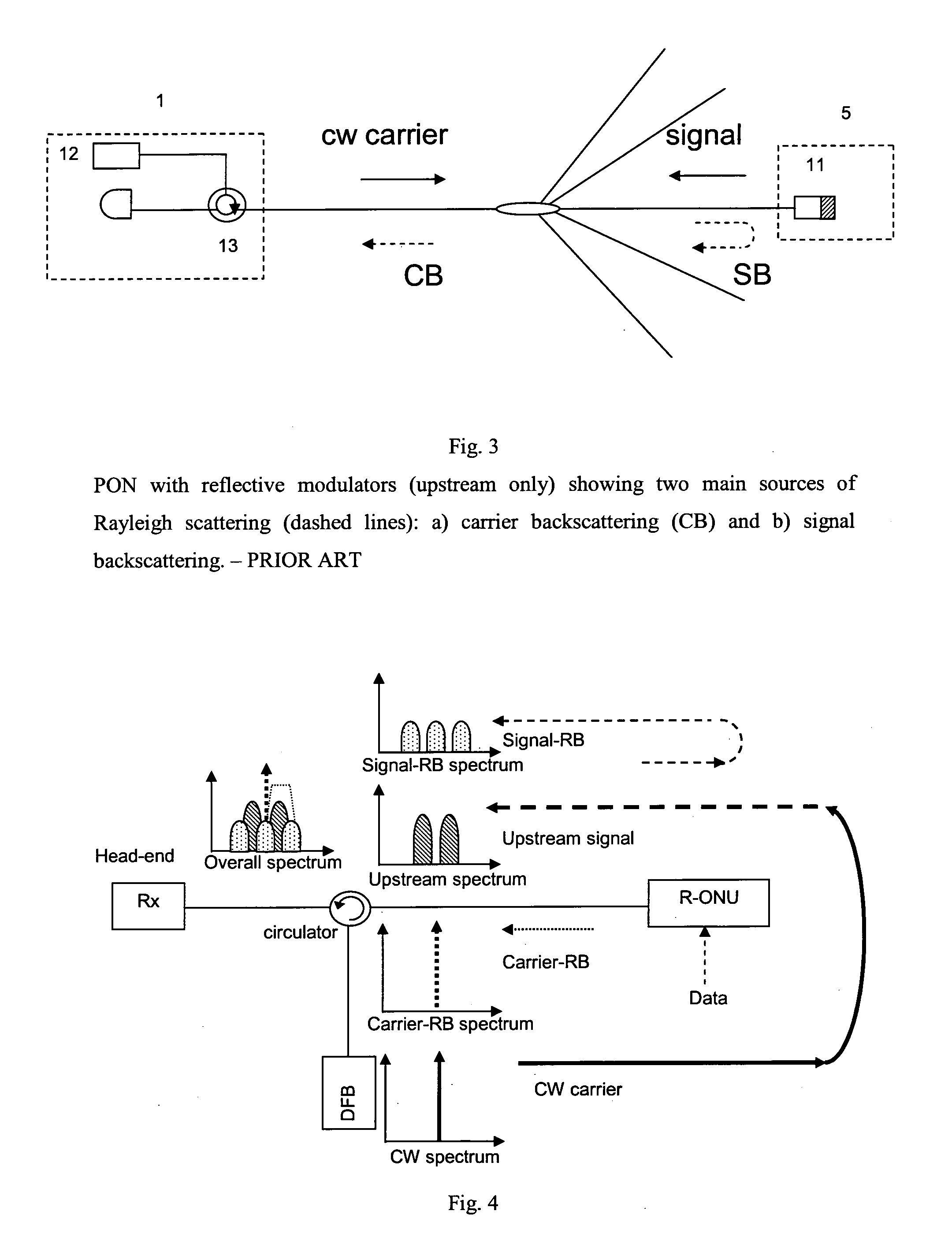Optical communication system
a communication system and optical communication technology, applied in the field of optical communication networks, can solve the problems of impairment, channel requires bidirectional or counter-propagation, and source is typically expensive, and achieve the effect of avoiding optical beat interference nois
- Summary
- Abstract
- Description
- Claims
- Application Information
AI Technical Summary
Benefits of technology
Problems solved by technology
Method used
Image
Examples
Embodiment Construction
[0024]The invention will be more clearly understood from the following description of some embodiments thereof, given by way of example only with reference to the accompanying drawings in which:—
[0025]FIGS. 1 to 3 are diagrams concerning the prior art, as set out above;
[0026]FIG. 4 is a diagram showing a modulation scheme of the invention in a PON;
[0027]FIGS. 5 to 7 are diagrams showing further embodiments; and
[0028]FIGS. 8 to 10 are plots showing experimental and simulation results demonstrating advantages of the invention.
[0029]An optical transmitter of the invention is of the reflective modulation type. The transmitter has a means of generating reflection, a mixer for mixing a data stream and a sub-carrier, and an optical modulator for modulating an optical carrier with the output from the mixer in order to avoid optical beat-interference noise arising from, for example, Rayleigh backscattering.
[0030]The modulator is in one embodiment of the interferometric type such as a Mach-Ze...
PUM
 Login to View More
Login to View More Abstract
Description
Claims
Application Information
 Login to View More
Login to View More - R&D
- Intellectual Property
- Life Sciences
- Materials
- Tech Scout
- Unparalleled Data Quality
- Higher Quality Content
- 60% Fewer Hallucinations
Browse by: Latest US Patents, China's latest patents, Technical Efficacy Thesaurus, Application Domain, Technology Topic, Popular Technical Reports.
© 2025 PatSnap. All rights reserved.Legal|Privacy policy|Modern Slavery Act Transparency Statement|Sitemap|About US| Contact US: help@patsnap.com



